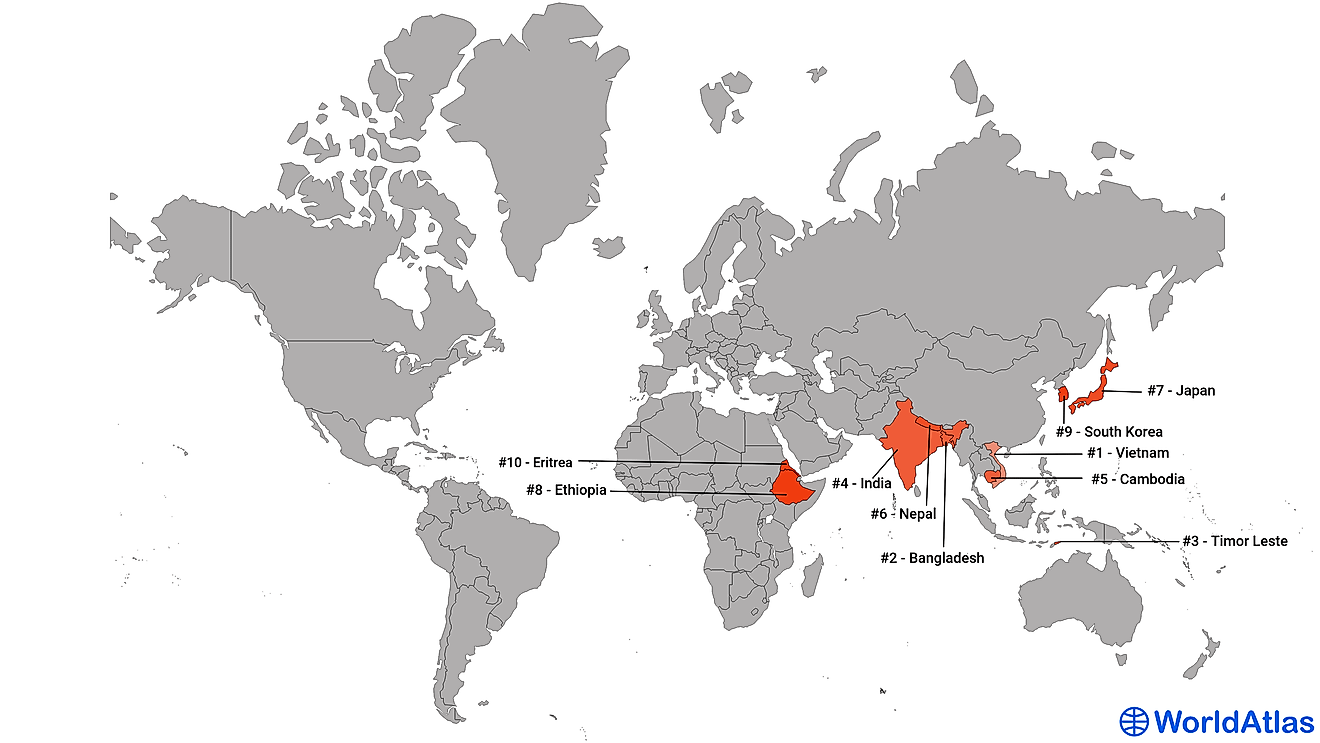Ethnic Composition Of The Population Of Tajikistan

The Republic of Tajikistan is a country of 8.75 million people in Central Asia bordering China, Uzbekistan, Afghanistan, and Kyrgyzstan. Tajikistan was part of the Soviet Union before its collapse and the country became independent on September 9, 1991. Tajikistan is the traditional home of the Tajik people alongside parts of Afghanistan and Uzbekistan. The Tajiks (84%) are the dominant ethnic group, while the Uzbeks (13.8%), Kyrgyzs, Russians, Turkmens, Tatars, and Arabs form minority populations.
Ethnic Diversity in Tajikistan
Tajikistan is fairly ethnically diverse compared to the 1920s due to a large number of immigrants that migrated into the country during the Soviet era. However, it is less varied compared to the Soviet era after large numbers of non-Tajiks left the country to flee the civil war and punitive government policies after independence. The Uzbeks are concentrated in the Fergana Valley that was traditionally part of Uzbekistan but tacked onto Tajikistan during the disintegration of the Soviet Union. Between 1989 and 2000, the population of Uzbeks dropped from 23.5% to 15.3% while that of the Russians dropped from 7.6% to 1.1%. The Tajik population rose from 62.3% to about 80% within the same period. Intermarriage between the Uzbeks and Tajiks in the Fergana Valley has dissolved the specific ethnic differences and gave rise to Uzbekistani identity.
Ethnic Groups During the Soviet Era
In the late 1980s, three-quarters of the Tajik people in the Soviet Union were in Tajikistan while a million more lived in Uzbekistan. Smaller populations lived in China and Afghanistan. Other ethnic groups in Tajikistan during this period were the Uzbeks (23.5%), Russians (7.6%), Volga Tatars (1.4%), and Kyrgyz (1.3%). During the Soviet era, the Eastern Iranian people such as the Pamiri and Yaghnobi people were classified alongside the Tajiks but were not assimilated.
Non-Tajik Migrants in the Soviet Era
During the Soviet era, the government offered incentives such as cash bonuses and scholarships, as well as reassignment to increase the Russian population in Tajikistan. In the 1920s and 30s, a shortage of skilled professionals in Tajikistan prompted the central authority in Moscow to send skilled laborers to Tajikistan while many more were sent as political prisoners. By 1940, half of the workforce in the state consisted of non-indigenous nationalities, most of whom were Russians. During the Second World War, many industries and employees shifted to the east to avoid being captured by the Germans. Tajikistan proved a popular destination, and as a result, the Russian population grew from 1% to over 13%. Due to the prominence of non-Tajiks, especially the Russians in urban activities such as industry and government, the capital city of Dushanbe was predominantly inhabited by the non-Tajiks. According to the census of 1989, the population of Dushanbe consisted of Tajiks (39.1%), Russians (32.4%), Uzbeks (10%), Tatars (4.1%) and Ukrainians (3.5%). Most of the educated Tajiks people in urban environments spoke Russian while the Russians felt no need to learn the Tajik language.
Emigration after the Soviet Union
Towards the collapse of the Soviet Union, waves of emigration occurred as the Russians, and other non-Central Asians left the country alongside more than 200,000 Tajiks. Most of the immigrants cited fear over a looming civil war and the decision to make Tajik the official language. More than half a million Russians moved back to Russia, depriving the country of professional and skilled labor. Schools and hospitals closed due to lack of teachers and doctors while industries and businesses faced a shortage of skilled labor.
Ethnic Tensions in Tajikistan
A degree of ethnic tension exists among the majority Tajiks and the minority ethnic groups, especially the Russians in the urban area and the Uzbeks in the North. The ethnic minorities were relegated to second-class citizens after independence in 1991, prompting a majority of the Russians to leave the country. Even during the Soviet era, ethnic tension existed in Tajikistan as the native population directed violence towards other nationalities as a show of resentment of the Soviet power. In 1989, Kyrgyz and Tajiks clashed over water and land but the antagonism reached a new level during the civil war of 1982 when the Uzbeks in Tajikistan joined the militia trying to restore the Soviet regime to power.











